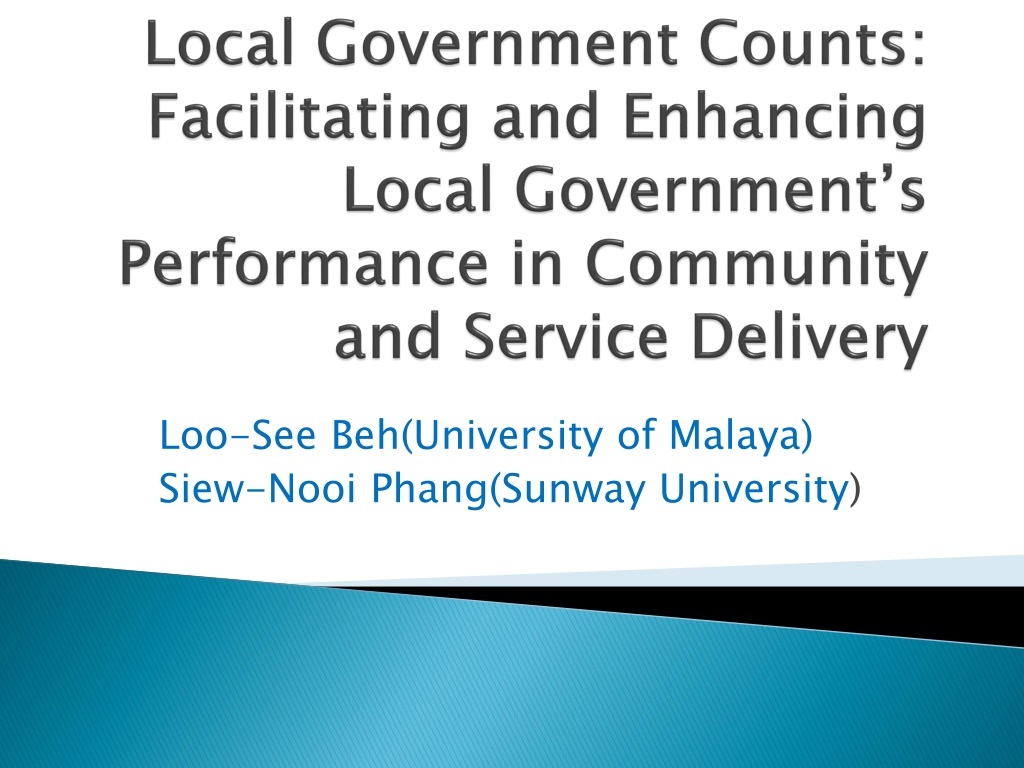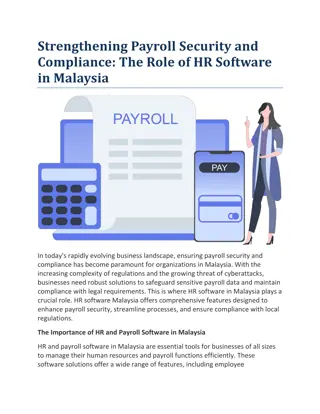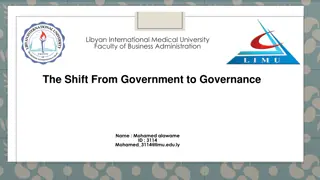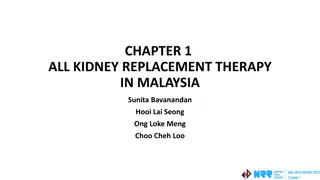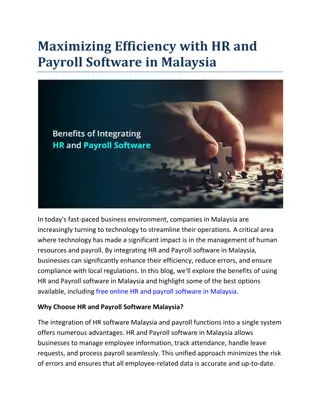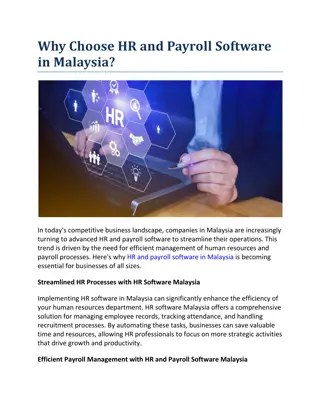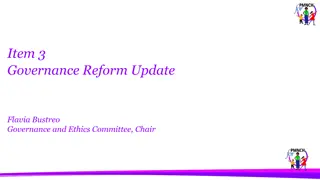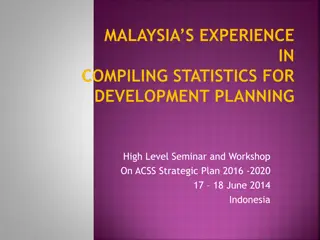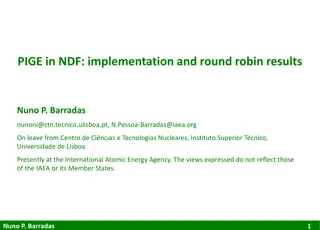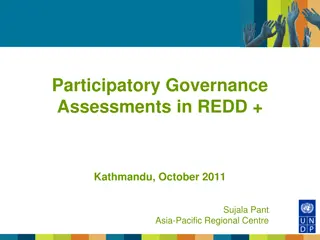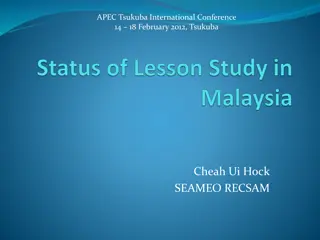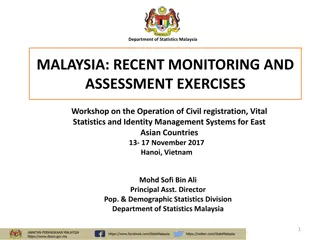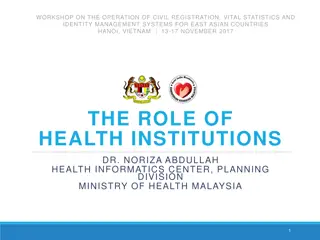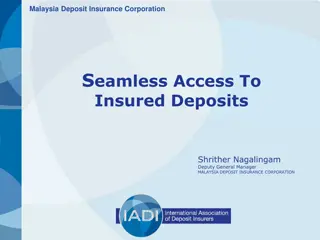Governance Structure of Malaysia: A Multilayered System
Malaysia's governance system consists of three tiers - Federal, State, and Local, each with distinct functions and responsibilities. The Federal government is headed by the Prime Minister, while the State governments are led by Chief Ministers or Governors. Local governance includes city councils and district councils, enhancing democracy at the grassroots level. The system ensures a balanced distribution of power and control across different levels of government.
Download Presentation

Please find below an Image/Link to download the presentation.
The content on the website is provided AS IS for your information and personal use only. It may not be sold, licensed, or shared on other websites without obtaining consent from the author. Download presentation by click this link. If you encounter any issues during the download, it is possible that the publisher has removed the file from their server.
E N D
Presentation Transcript
Loo-See Beh(University of Malaya) Siew-Nooi Phang(Sunway University)
Malaysia is a Federation and has three tiers of Governments Federal Sovereign National Parliamentary constitutional monarch Executive Branch headed by the Prime Minister State Quasi-sovereign 13 states; nine states each has a hereditary ruler and the remaining 4 each has a Governor Executive branch headed by Chief Minister Local Infra-sovereign 4 major types: city hall, city council, municipal & district councils Headed Chief/President/Chairman with 24 Councillors democracy; headed by a by an appointed
King Levels of Government Levels of Government Parliament Cabinet Federal Federal Prime Minister s Department Ministry of Housing & Local Government Other Ministries Department of Local Government National Council for Local Government Members 1 Chairman 10 Federal Reps 11 State Reps 1 Sabah Rep 1 Sarawak Rep State Level State Level State Development Agencies State Government Local/District Level Local/District Level City Hall City Council Municipal Council District Council Indicators: Indicators: Power & Control; Power & Control; Advice; Advice; National Council Members for Local Government National Council Members for Local Government 3
External affairs Medicine & health Defence Labour & Social Security Internal Security Welfare of aborigines Civil & criminal law, & administration of justice Federal holiday; standard of time Federal Citizenship & naturalisation; aliens Professional licensing Federal govt. machinery Unincorporated societies Finance Agricultural pest control Trade, commerce & industry Prevention & extinguishment of fire Shipping, navigation & fisheries Publications Communications & transport Censorship Federal works & power Theatres & cinemas Surveys, inquiries & research purpose Co-operative societies Education 4
State Functions Shared Functions Muslim laws & custom Social welfare Land Scholarship Agriculture & forestry Protection of wild animals & birds; national parks Local government Animal husbandry Local public services; boarding houses, burial grounds, pounds & cattle trespass, markets & fairs, licensing of theatres & cinemas Rehabilitation of mining land & land which has suffered soil erosion State works & water Vagrancy & itinerant hawkers State government machinery Public Health State holidays Drainage and irrigation Inquiries for state Town & country planning Creation of offences & indemnities related to state matters Fire safety measures Turtle & riverine fishery Cultural and sports, housing 5
Supplementary List for Sabah & Sarawak Additional Shared Functions for Sabah & Sarawak Native law and customs Personal law Incorporation of State authorities and other bodies Adulteration of foodstuff and other goods Ports and harbours other than those declared Federal Shipping under fifteen tons Cadastral land surveys Water power In Sabah, the Sabah Railway Agriculture and forestry research Charities and charitable trusts Theatres, cinemas & places of amusement 6
In Peninsular Malaysia, all Local Authorities operate under uniform laws enacted by Parliament under clause (4) Article 76 Federal Constitution: Local Government Act, 1976 (Act 171) Street, Drainage and Building Act, 1974 (Act 133) Town and Country Planning Act, 1976 (Act 172) However the City Hall of Kuala Lumpur also uses: Federal Capital Act, 1960 (Revised 1977) (Act 190) City of Kuala Lumpur (Planning) Act, 1982 (instead of Act 172) 7 continue
In Sabah all Local Authorities operate under: Local Authority Ordinance, 1961 Town and Country Planning, 1969 (Cap 141) In Sarawak, 3 Ordinances: Local Authority Ordinance, 1996 (Cap 20) Kuching Municipal Ordinance, 1988 (modification of Cap 116/1948) City of Kuching North Ordinance, 1988 8
Under government is a subject of the State Government. A Local Authority is subordinated to the State Government and is subjected to its supervision Under the Local Government Act 1976, the State Authority: In consultation with the Minister (charged with Local Government), has powers to declare and determine the status of a Local Authority and to delineate the Local Authority boundaries the Federal Constitution, local continue 9
Appoints the Councillors, the Mayor or President and the Secretary Approves the annual and supplementary budget and any proposals to raise loans and local taxes Can issue directions of a general nature on the policy to be followed in relation to matters affecting the interests of the Local Authority areas 10
Type of Local Authority Peninsular Malaysia Sabah Sarawak Total 3 City Hall 1 1 1 9 City Council 7 0 2 Municipal Council District Council 38 34 2 2 99 57 21 21 1 Town Board - 1 - 99 25 26 150 Total 11
Governments are experiencing increasing expectations for political, social and economic transformation from within and outside. All governments which are to remain functionally and politically relevant need to improve the capacity of their institutions and service delivery. 12
The legitimacy of a government requires it to meet the demands of the citizenry. To bolster its ability to deliver governments need to stress on continuous reforms to better their image and status quo. 13
Can be defined as some of the ways through institutions (public and private) plan and manage their common affairs. It is a continuing process that may either lead beneficial includes formal institution and informal arrangements as well as the social capital of citizens. which individuals and to conflict cooperative or to actions. mutually It 14
Better quality of life for all A betterment of the human condition overall Leverages knowledge based development Making cities more efficient, equitable, safer and sustainable on sustainable and 15
Relevance as an efficient service provider Demands from community:Perception Gap Revenue administration Capacity building & Carrying capacity Community participation & LA 21 Good governance 16
Lack of awareness, information and lines of communication Limited extent of citizens involvement in the local community Government responsiveness to its citizens difficulty in managing change
Administrative rigidity internalisation of top- down approach Emergence of re-centralisation inability to re-orientate to the needs for greater decentralisation and empowerment
Uniqueness of Malaysias local government situation; e.g. absence of local elections; Skewed financial allocation; Delegation of burdensome services with add on services, further weakening local government; Re-centralisation and formal harmony and informal discord ; 19
Historically federal-state-local relations had been eventful; Community awareness and participation the global citizen; Local Government Act (Act 171) implementation was an effort at reforming LG, but rendered LG weaker. Review of Act 171 in consonance with re-positioning LG in line with the nation s transformation programme. 20
Thank you for your time! Q & A lucybeh@gmail.com phangsn99@gmail.com
